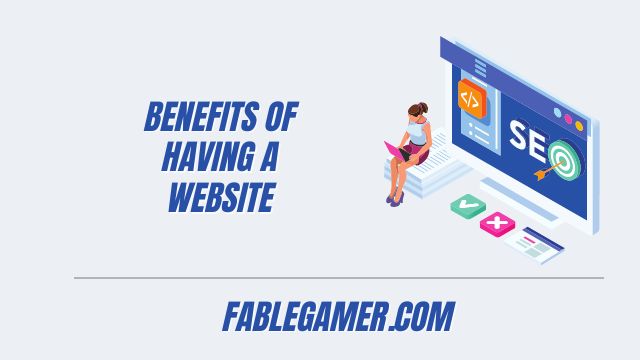In this digital era, every business must have a website to improve the brand image, including the restaurant and café business. Restaurants and restaurants also need to have a website, especially if you want to make it easier for your potential customers to find your restaurant or café online.
Did you know that 81% of internet users will do research online before they make a purchase. And 62% of diners will research the restaurant before they decide to eat out. This means it is very important for restaurant business owners to have a professional and functional website.
When you want to make your restaurant brand known to a wide audience. Then you will need the media used to serve food products from the restaurant and information about your restaurant. Website is the best digital media that you can use as a medium for information about your restaurant. So that someone who wants to visit your restaurant can see what you have to offer before they head to the location.
If you’re still buying time in setting up a website for your restaurant, that’s a bad idea. Because there are so many benefits that you can get if you have a well-optimized website.
Benefits of Websites for Restaurant / Restaurant Business
Websites are a very common digital asset owned by every industry. Apart from being a medium source of information for a company, the website is also a 24-hour non-stop seller tool. Here are some of the benefits of a website for a restaurant business that you should know:
1. Improve Brand Recognition
An effective way to expand your restaurant business brand is to build an effective and functional website. With the website, you can tell a wide audience who you are and tell potential customers about the menu, the atmosphere of the restaurant, prices and other information.
A website that is built for the restaurant business does not have to be expensive but must be informative, attractive, professional and reflective of your restaurant. If you decide to use a restaurant website creation service, make sure you ask him to make it with an elegant design that conveys a professional impression.
2. Google’s First Place to Go
Did you know that Google is the first tool that potential customers go to to find information about where to eat? If your restaurant doesn’t have a website, then how can they find your address?
If you care about your online customers, then you need to build a website as soon as possible to make it easier for them to find you online. After all, with a website, your restaurant will seem professional because it presents information online.
3. 24-Hour Non Stop Promotional Tool
The website is not only a medium of information about the menu and atmosphere of the restaurant, but can also be used as a 24-hour non-stop promotional tool. If your restaurant offers catering services in addition to your daily menu, you can promote it through your restaurant’s website.
When you promote catering services then your customers can see and know the other services that your restaurant offers them. If they need catering services allow them to contact you.
4. Improve Your Restaurant Business
Another benefit of a website is that it can give your restaurant business incredible online visibility that allows customers to more easily find you. You can tell your restaurant menu and what sets your food and restaurant apart from someone else’s. You can register your restaurant website in Google Place and local directories to make it easier for local searches to find you.
Your website works 24 hours a day to provide the information your potential customers need. That’s why you must have a website for your restaurant because it can improve your business.
Now you know what are the benefits of a website for your restaurant business. Now it’s time for you to start creating one! Contact us to discuss what kind of website design you want, our web designer team is here to help!
-
My passion for SEO started when I launched my first website and realized how important it is to have a solid online presence. Since then, I've dedicated my career to mastering the art of SEO, and I'm excited to share my knowledge and insights with you. Through my blog, you'll learn everything you need to know about search engine optimization and how to take your website to the top of the rankings.
View all posts
Other Recommendations:
- How to Properly Display a Website on the First Page of… Looking for how to display your website on the first page of Google? Well, that's right, because in this article we have prepared several surefire ways to display a website…
- 6 Reasons Why Websites Don't Bring In Potential Customers Already have a website but sales don't increase? Maybe you already know that the website is a 24-hour non stop seller tool. But why doesn't your website bring in potential…
- Want to Learn SEO? Get Started With These 7 SEO Metrics! Search Engine Optimization (SEO) is a collection of techniques applied to websites to increase their reach more broadly. If you do it right then you can get better rankings and…
- 8 Important On Page SEO Factors That Affect Your Web Ranking Learning SEO means you have to know the important factors of on page SEO to execute a successful SEO strategy. To generate higher rankings in Google search results, SEO plays…
- Advantages of Doing SEO Marketing That You Should Know SEO marketing is very important for businesses, because it can help online business people get quality prospects. For people who run an online business, they are familiar with Search Engine…
- 4 Ways to Promote Your Website to Get A Lot of Visitors Have you created a website but are still confused about how to promote a website? Websites that have been created need to be promoted in order to get high rankings…
- Get to know Technical SEO and Its Benefits for Websites What is technical SEO and what are the benefits for websites? If you are familiar with the term SEO, do you already know about technical SEO and its benefits for…
- How To Optimize Blog Posts For SEO If you have a blog, of course you already know the importance of blogs for business. But do you already know how to optimize blog posts to make them more…
- Find Out The Strategies to Increase Sales Through Google… For someone who is new to online marketing, it may be possible to ask why Google can help bring in sales. In digital marketing, Google is a search engine platform…
- The Benefits of Responsive Web Design With an ever-increasing number of internet users accessing it via mobile devices, static desktop websites are no longer sufficient. Responsive web design provides the solution to this issue. It adjusts…
- The Importance of Search Engine Marketing (SEM) For Business In addition to SEO you can also do Search Engine Marketing (SEM) which is also one way to display your website on page one of search engines. Search Engine Marketing…
- Why Your Website Ranking Might Drops on Google Search Result Google is the most popular search engine that is widely used by online businesses as their marketing tool by using the website as a medium. Therefore, so that the online…
- 5 Success Factors of Building a Blog Want to know the success factors in building a blog? If you have just created a professional blog then the next stage is to develop it. Especially if your goal…
- What is White Hat SEO? Why Should You Do It? Maybe you are familiar with SEO but are you familiar with white hat SEO? Search Engine Optimization or ABBREVIATED as SEO is the process of improving website rankings with the…
- 4 Ways to Optimize Old Content on a Website Here Are The… Did you know that optimizing old content on a website can provide many benefits to your website's ranking in search engines? If you think that creating a website is enough…
- How To Manage Websites To Increase Ranking & Traffic Do you have a new website and are confused about how to manage a website to increase ranking and traffic? Well, that's right, because in this paper we have prepared…
- 4 Ways to Choose the Right Keywords For SEO Strategy If you ask if there is an easy way or step to choose the right keywords for an SEO strategy, then this is where you will find the answer. Because…
- Powerful Ways to Brand Products Through Social Media There are powerful ways to build product branding on social media that you can apply to your business. The digital era makes it easier for businesses to convey messages to…
- What Is Technical SEO? Technical SEO is the part of SEO that works behind the scenes to help search engines crawl, index and understand your website. Until these aspects of SEO are properly optimized,…
- Let’s Get to Know More About Responsive Web Design Maybe at this time you are still confused about what Responsive web design and mobile friendly web design are. If you do, let's get to know about responsive web design…
- What is White Hat SEO? White Hat SEO is an ethical search engine optimization technique that adheres to Google's quality guidelines. It can be an effective strategy for driving traffic, building a brand and increasing…
- Want to Run a Side Business? Follow These Tips &Tricks! If you want to run a side business but are still confused about where to start? Relax because in this article we have prepared tips & tricks that can help…
- Disadvantages If You Stop Running SEO Strategies Are you planning to stop implementing SEO on your website or have you even stopped? If you care about rankings and website traffic then you must know the disadvantages if…
- 5 Types of Businesses That Really Need SEO Search Engine Optimization is one of the online marketing strategies that has grown rapidly in recent years. Where many industries are utilizing SEO to help them in increasing sales. For…
- Knowing The Importance of Having an SEO Strategy SEO (Search Engine Optimization) is the process of optimizing your website so that search engines like Google rank it higher. This can lead to more organic traffic and increased brand…

